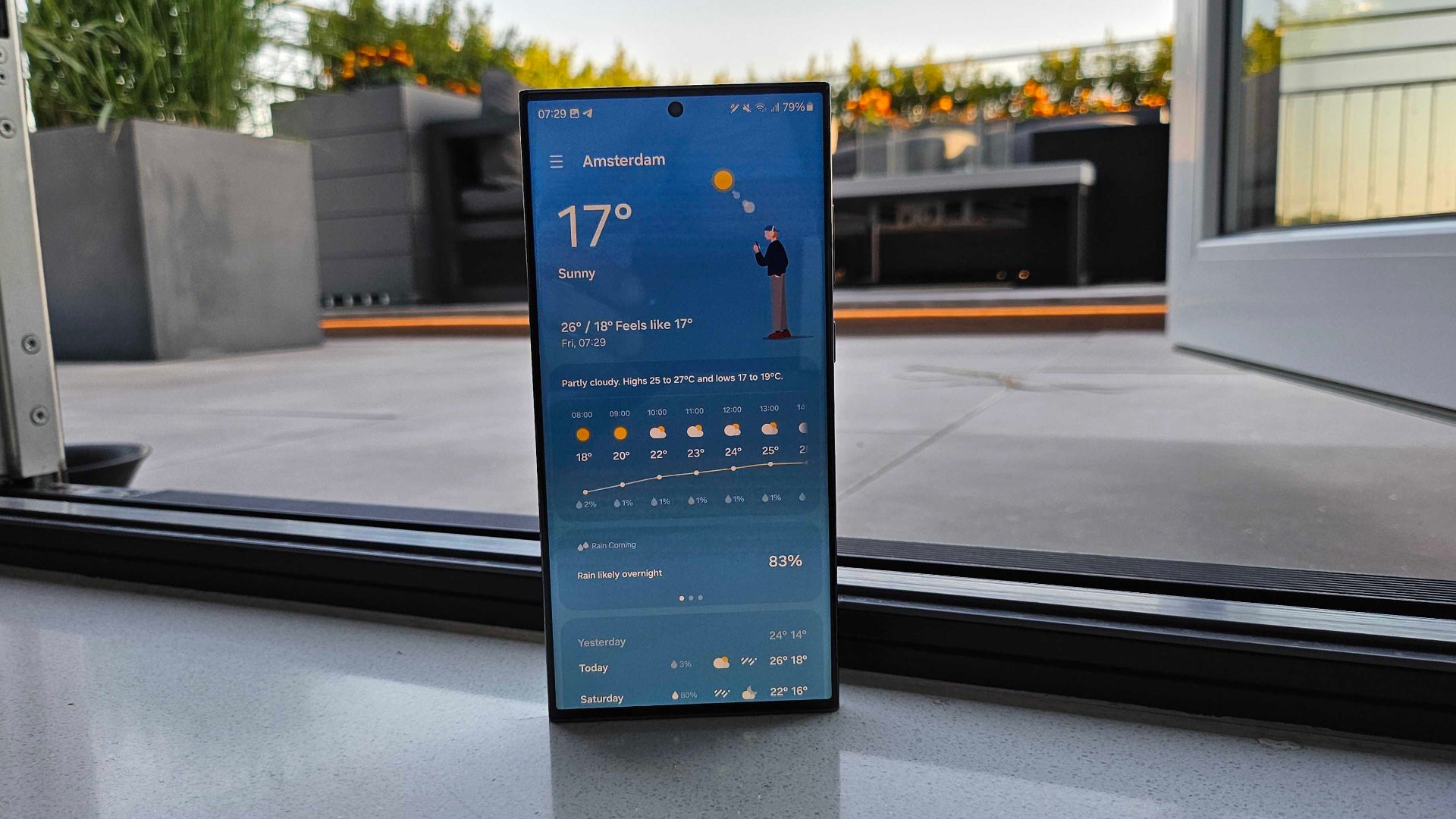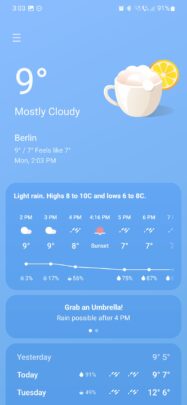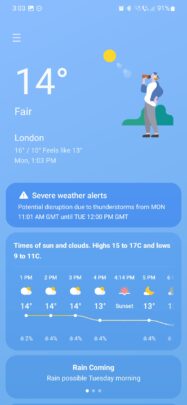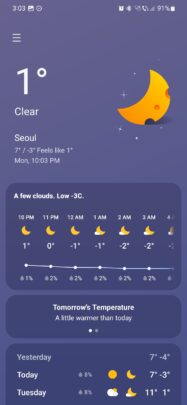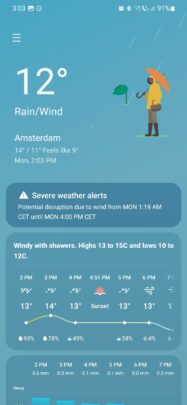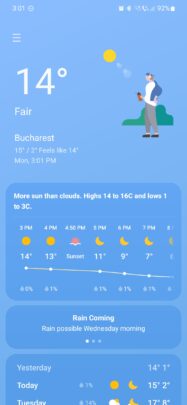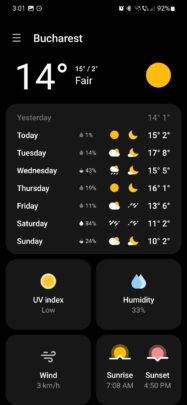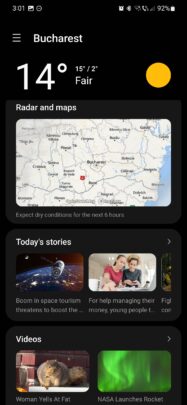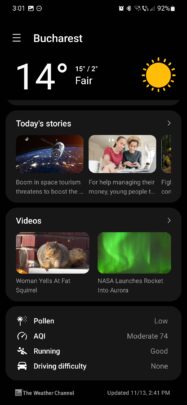It's late autumn, the winter is just around the corner, and there's probably no better time to talk about the weather and weather-related apps. Welcome to a new SamMobile Weekly overview of Galaxy apps and services. This week, we'll dive deeper into the Samsung Weather app that ships with Galaxy phones and tablets.
As usual, we'll start from the very beginning and ask the primordial question: What is Samsung Weather?
Story continues after our Galaxy S23 FE review video
Samsung Weather is an app developed by Samsung that is preloaded on most Galaxy device. At its core, it offers weather information. But look deeper under the hood, and you may find a few interesting facts and settings that will surprise you.
First, it's worth noting that Samsung Weather gathers all its data from The Weather Channel to display on its One UI-like interface. Interacting with most Samsung Weather UI elements will redirect the user to an appropriate webpage of The Weather Channel.
Later, upon using the app more, you might notice that Samsung Weather doesn't always look the same. It changes based on several factors. Furthermore, you will find out that this app can give you information about more than just the temperature outside.
Samsung Weather app general overview
At a glance, the most prominent information Samsung Weather shares with its users is the temperature outside. It displays temperature information based on the user's current location or places that can be defined manually.
Samsung Weather offers information regarding the current temperature and weather as well as hourly and daily forecasts. And every weather type is accompanied by a beautiful animation.
In addition, Samsung Weather can tell you about UV indices, Humidity levels, Wind speeds, and Sunrise/Sunset hours, which change based on seasons. The app also offers a map view, as well as “Today's stories” and “Videos” categories.
Lastly, by scrolling down at the very bottom of the Samsung Weather homepage, users can get information about pollen and air quality, as well as conditions for running and information about driving difficulty.
Before we move on to discussing the Weather app in greater detail this week, it's important to underline that the Samsung Weather UI isn't entirely fixed in place. Some elements will appear or disappear depending on the weather outside, alerts, and forecasts.
Likewise, you'll notice that the Weather app's overall look will change based on the time of day and the weather. But regardless of how it changes visually, the general rule is that most UI elements that can be interacted with (tapped on) will lead users to relevant The Weather Channel pages.
Join us throughout the week as we discuss more about the Samsung Weather app, locations, settings, units of measurement, and more. We may even take a closer look at Weather widgets.
